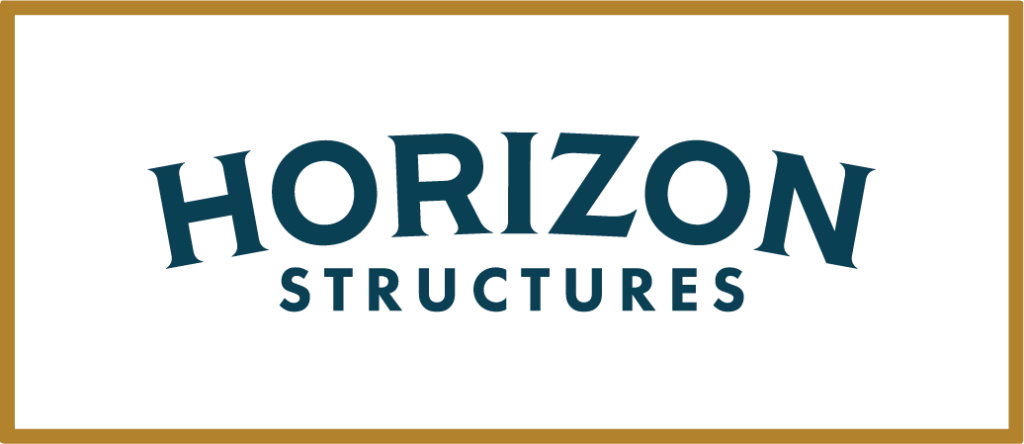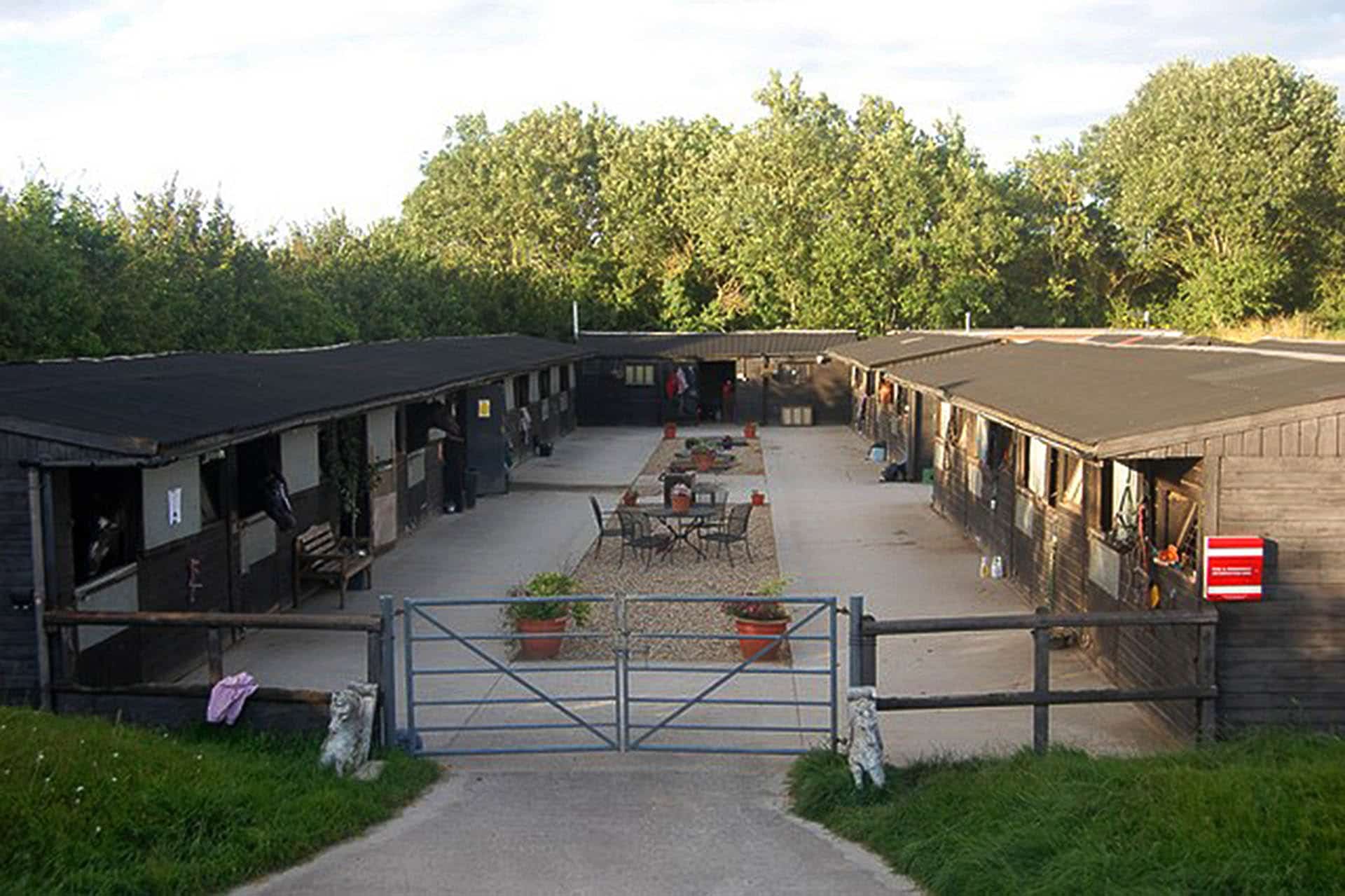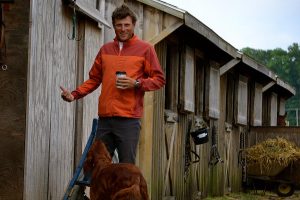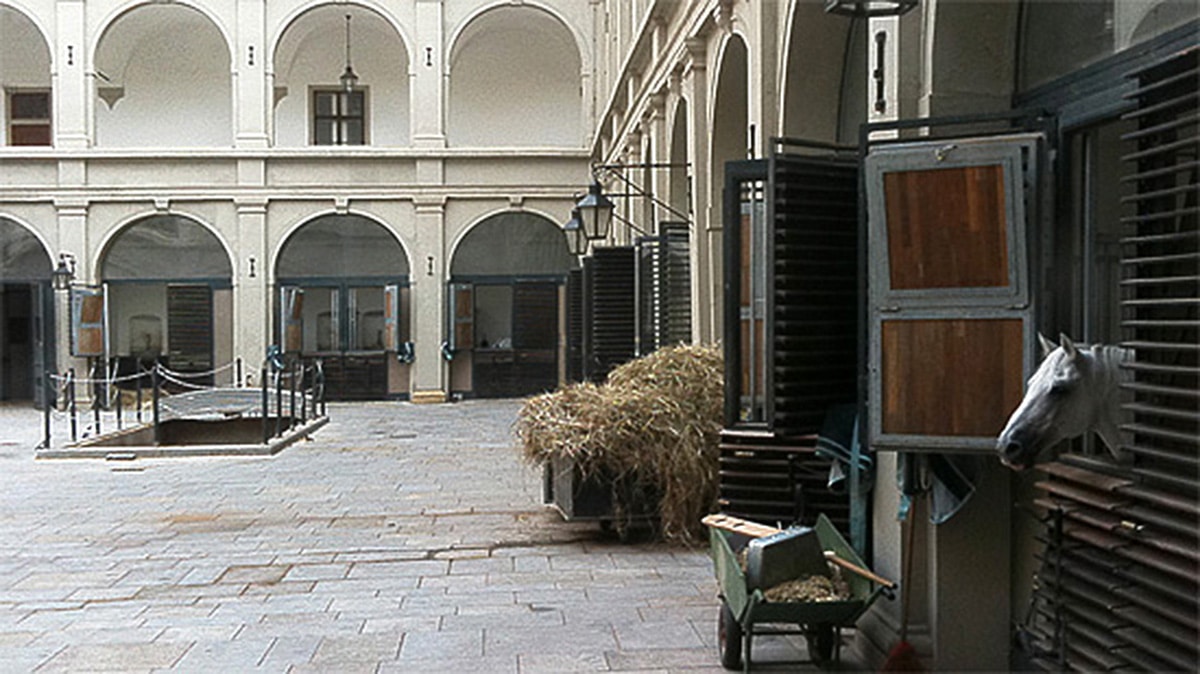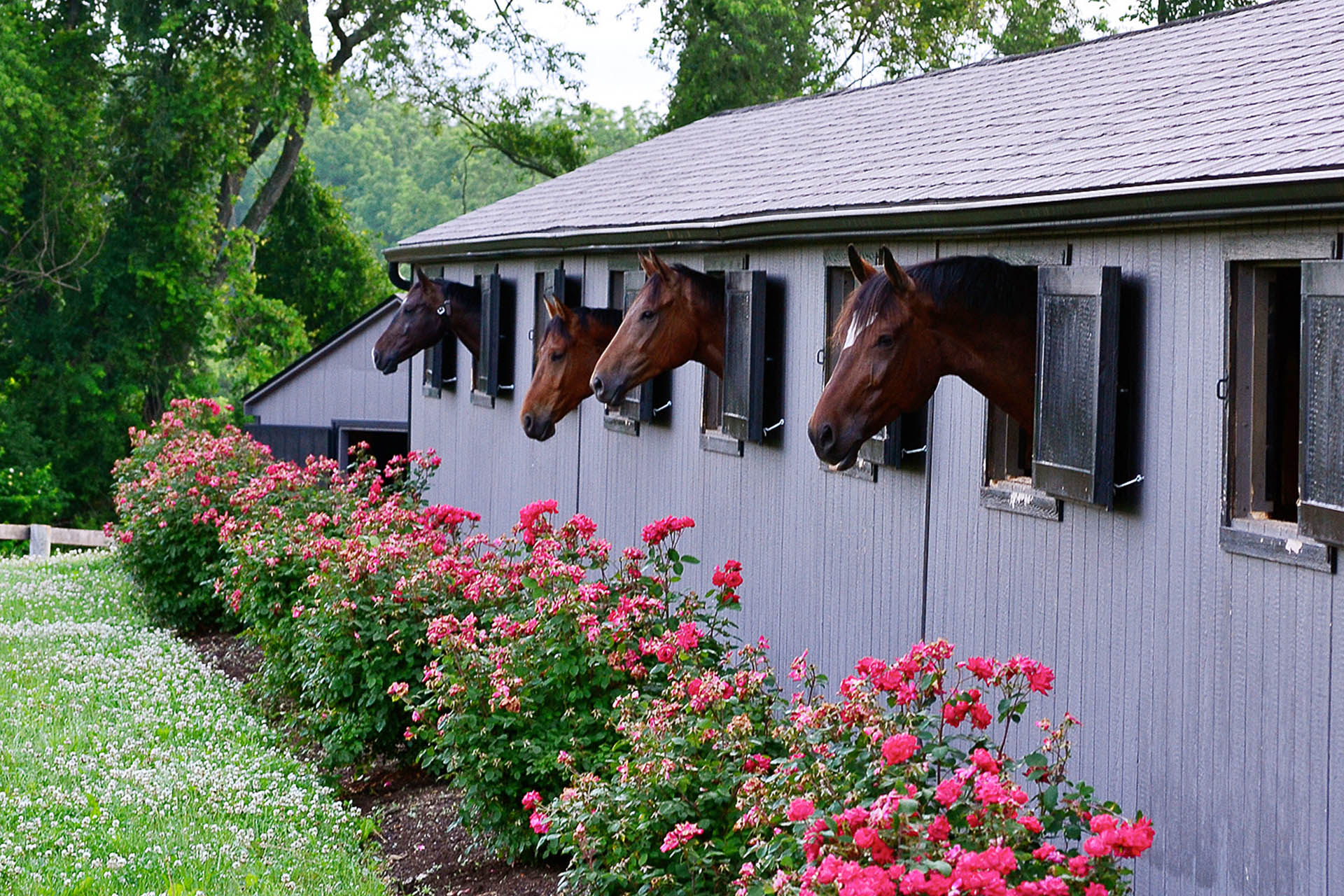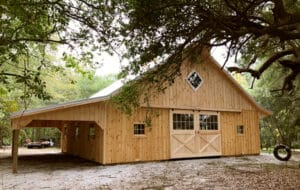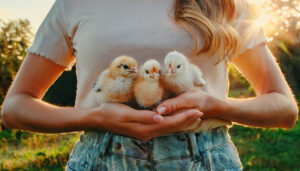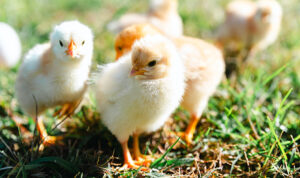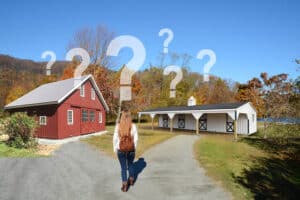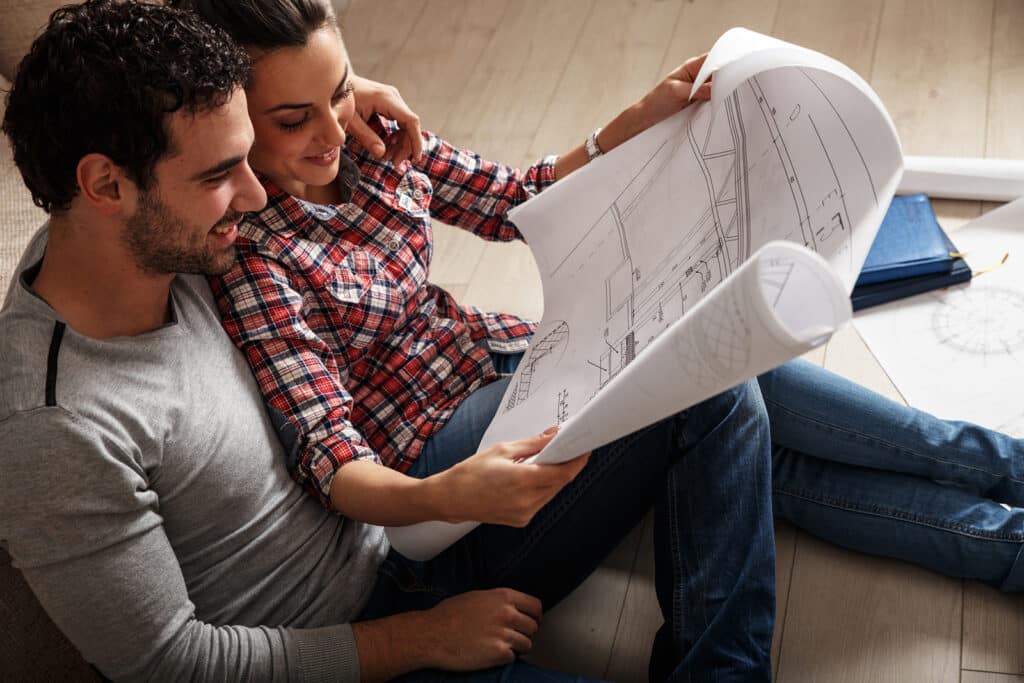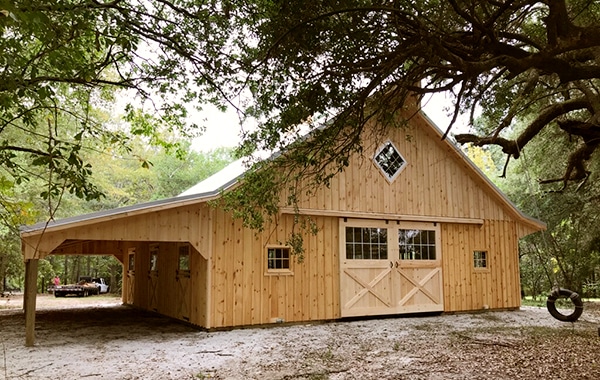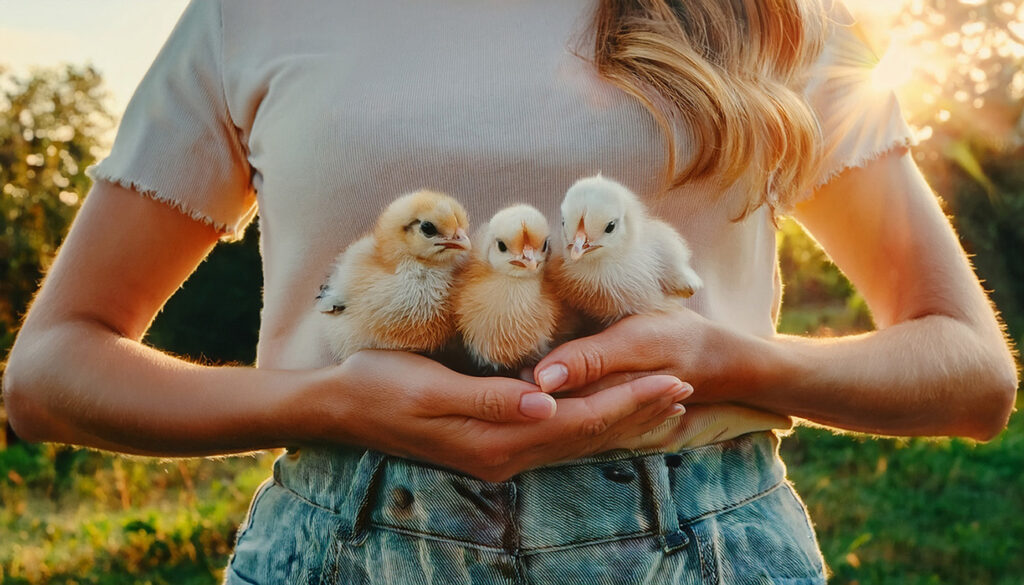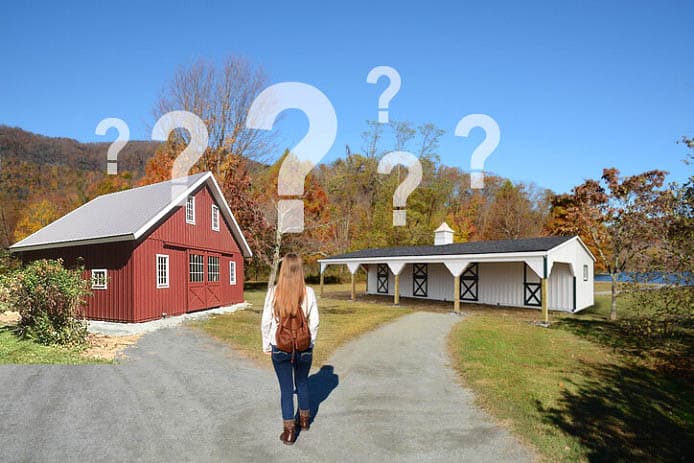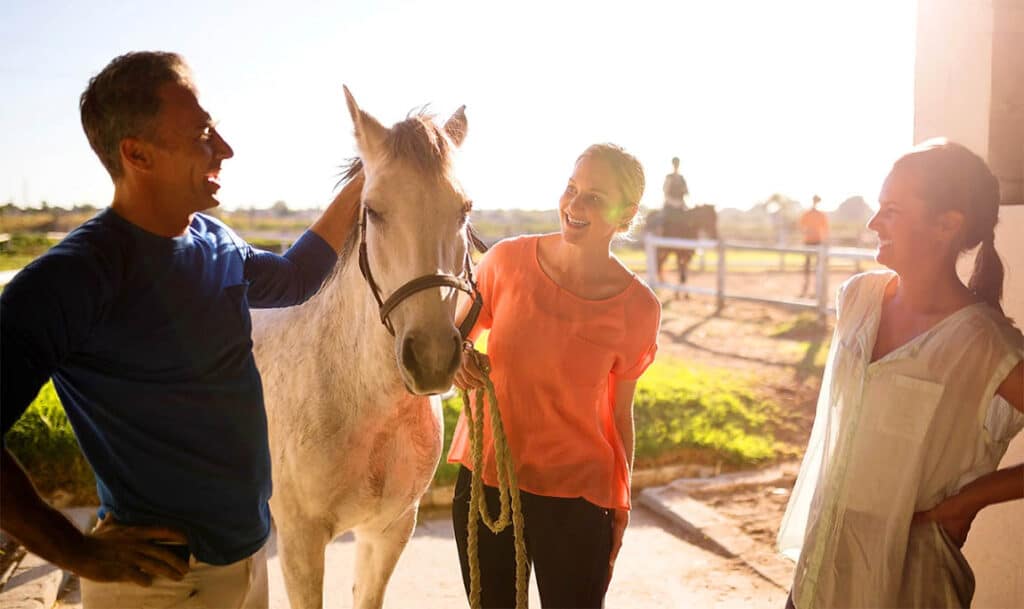As a kid growing up in England most horse housing in my Buckinghamshire neighborhood was some version of a shed row design. The traditional use of the shed row horse barn offered a less expensive and very serviceable stabling option. Frequently the configurations were in a square with a central yard. This layout is ideal for tacking up, mounting and bathing horses with protection from the wind. The older stable blocks would be built of brick, the newer ones made of wood.
As we know England enjoys plenty of rain, so overhangs were popular to protect the tenants from the weather. Rows and rows of horse heads, all gazing around with ears pricked at the daily courtyard activities were a good indicator that equine boredom was minimal. A daily peril, perpetrated by the more mischievous critters, was the occasional bite attempt across the door as you passed by with your wheelbarrow to muck out stalls.
The open air horse barn design provided a central location for all the equipment, privacy from outside eyes, and a certain level of security for the stock. Often the shed row would be placed close to the house so you could see the whole space from the kitchen window. Very useful for peace of mind in horse management!
The central area, or courtyard, was usually concrete or cobble to minimize the area mudding up into a quagmire in the winter. The sound of the horses’ shod feet clip clopping in and out of the stalls was magnified by the placement of the buildings and was always a delight to hear.
The racehorse industry has long utilized shed row style barns placed back-to-back as a profit-driven horse barn design to maximize revenue and minimize expense. The racing industry also realizes the benefits of ‘fresh air’ for their fast sleek Thoroughbreds who need maximum respiratory efficiency.
Successful world class Eventer Ginny Holgate (née Leng), once told me that she would never keep her horses in anything but a stall that faced the outside world. “Event horses need fresh air and lots of it,” Ginny explained. A popular thought amongst many eventing folk who want to maximize the benefit of fresh air in the horse’s respiratory system. The design of shed row horse barns minimizes inhalation of dust, other contaminants and allergens for both horses and their caretakers.
During a recent visit I made to Silva and Boyd Martin’s Windurra Farm in Pennsylvania, I noted the shed row open air horse barn design was popular throughout the property for both Boyd’s event horses and Silva’s dressage talents. As a U.S.A. team Olympian, Boyd Martin has admitted that his staff may find it harder to prepare his horses outside, but he likes the shed row stalls and the traditional benefits they provide. Additionally, his tragic experience with a devastating barn fire reinforces his preference for the shed row style barn over a center aisle barn for quick evacuation of the horses.
Another advantage of the shed row open air horse barn design, placed in an L-shape or square, is for the busy trainer or instructor, who wants to keep an eye on what is going on throughout the day. A quick glance across the yard will indicate what your students or staff are doing and whether those activities are being undertaken safely.
I do recall being ‘called out’ as a kid on many occasions for casual mistakes of my youth… “ Tighten that girth before you mount!” “ Shut the bottom bolt on the door!” “ You’ve missed grooming the top of his rump!” Well, you get the idea. We all make mistakes and take shortcuts.
There are many advantages of the shed row design from the standpoint of easy transport and set-up. Modular barn building companies can deliver multiple ‘banks’ of stalls and put them together on site. You can opt to have the entire structure used as stalls with Dutch doors or leave some open-faced for storage of equipment, hay and tools.
Site prep is minimal and placement is merely pointing the delivery driver in the right direction. This translates into a very quick and easy way to establish an immediate ‘yard’ in your backyard.
If your horse barn design is a square, as opposed to a “U” or an “L” shape, be certain to leave plenty of room for access of larger equipment such as a horse trailer or, more importantly, a tractor for manure removal.
When I was at the Spanish Riding School in Vienna, examining horses for purchase in the tiny square by the stables (when the horses lived at the palace mews), the manure truck arrived. It could barely fit through the archway and I could see the damage to the stone that had occurred over the years when the driver made an error backing into the tiny cobbled square.
Interestingly the manure was kept in a pit in the ground and lifted out by an ancient device to be loaded into the truck. The giant hole that remained was then covered by a large steel plate. I’m not recommending this option! Instead I’d construct a three-sided concrete block area that the tractor can access with a bucket and empty it daily.
The only downside of the shed row open air horse barn design is if you live in an area of heavy snowfall. Obviously, the snow needs to be removed and if the weather is cold then tacking up outside is not much fun, even if you are protected from the wind.
It is prudent to avoid placing a shed row barn facing in to the prevailing wind if you have a one, two or three-sided layout. Similarly, you should avoid creation of a wind tunnel which happens when 2 shed rows are placed parallel to each other and perpendicular to the prevailing wind direction. Unless you live in a warm climate, in which case this “aisle” can be very beneficial for the cooling breeze factor.
Personally, I have built both center aisle and shed row buildings on my farms in New York. One of the shed row stalls actually faced a swimming pool so the horses would watch the kids swim with some keen interest. From my kitchen window, I could see the horses doze, with their heads over the Dutch doors, soaking up the morning sun. It’s always nice to see that all your horses are up and healthy while you’re making a quick morning cuppa before you hit the barn chores.
Whatever structure you choose to make a horse ‘yard’ in your backyard a reality, take time to design it properly. Experience counts and mistakes can be costly so always consult a professional barn building company for advice. And don’t forget to ask about financing options! You might be pleasantly surprised at what you can afford.

